2004 Alfa Romeo 147
My first Italian car. As pretty as you could want it to be - and the correct colour.
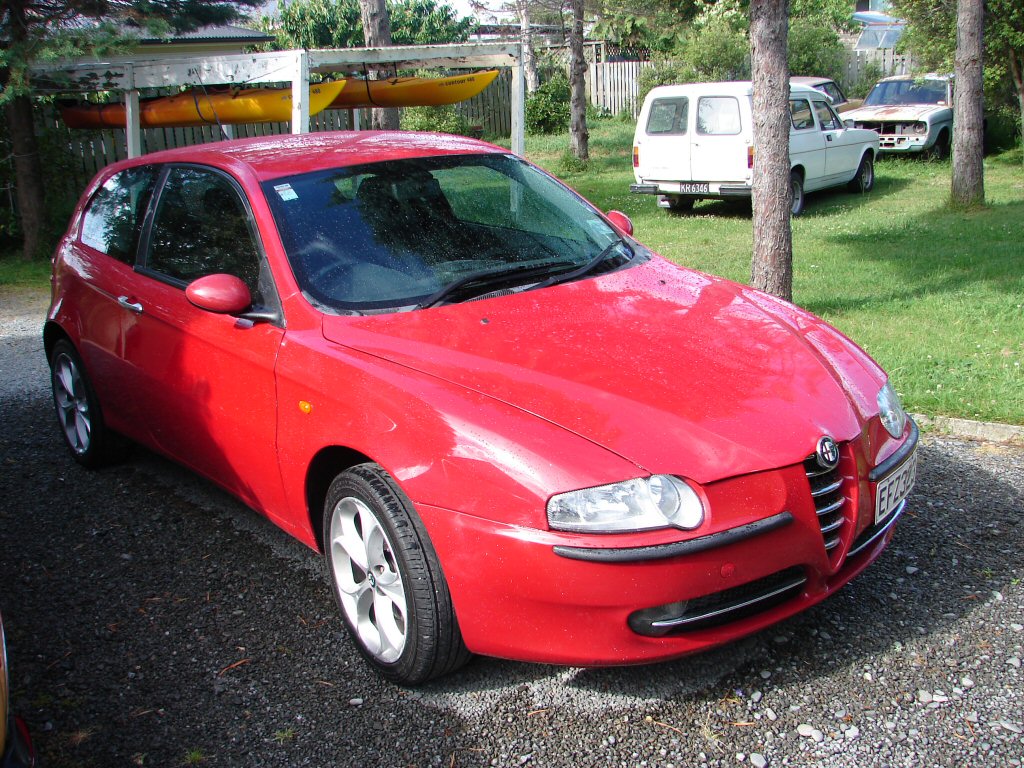
I have always wondered how it is you can tell you are looking at a European car just in one glance. Somewhere here is the answer..
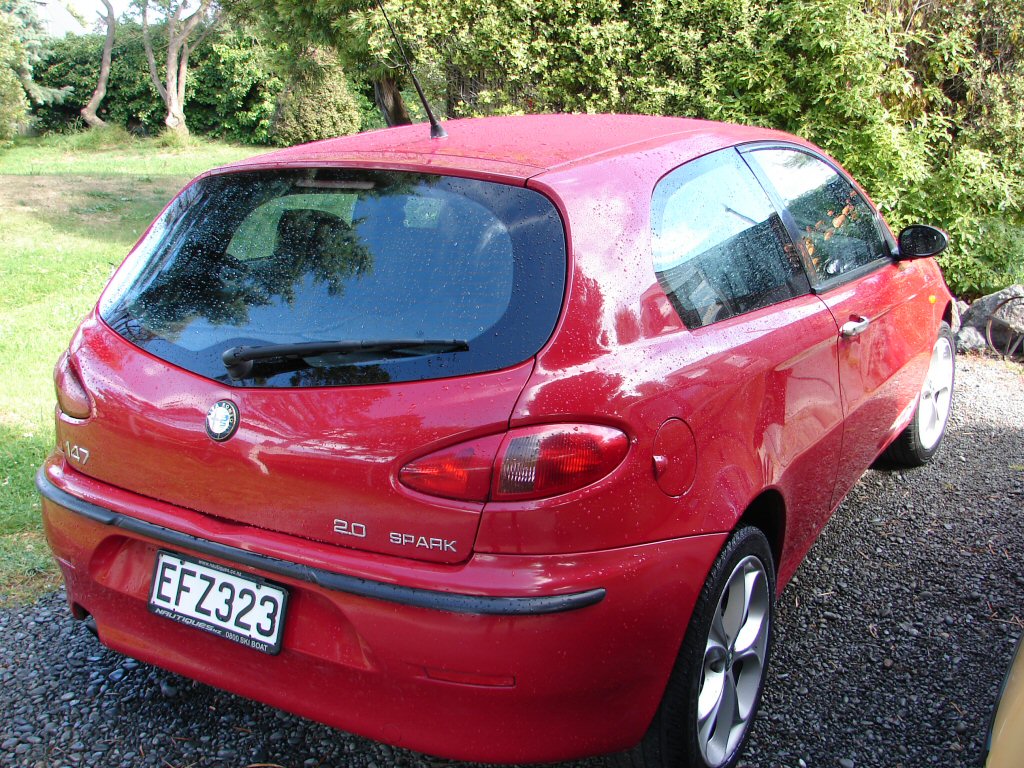
So - here is the less emotive stuff.
This is a 3 door Alfa 147 2 litre Twin Spark 5 speed manual. It has 17 inch wheels - much to its credit - which manage to both reduce road noise and minimise the effect of road surface irregularities
The Twin Spark has been an Alfa benefit for some years - it simply has two spark plugs in every cylinder, which aids the combustion process enough that they have continued with it rather than fit the occasional turbocharger. Mind you - I would be lining up to test drive the first turbo model in person.!
I think more to the point - this engine has variable timing on the inlet camshaft, which succeeds in not only making the powerplant extremely easy to live with at low revs, but also gives it a wonderfully intoxicating surge when it gets up to 3500 or thereabouts. I am not sure of the exact moment the transition takes place, because one is enjoying the process so much at the time it seems counterproductive to have eyes glued to the tacho.
At time of writing this I have just returned from a 1000Km weekend of pure fun motoring on the West Coast of our island. This means two traverses of the Southern Alps, and as we are well placed to do so, the route involved both the Lewis Pass and Arthurs Pass - both the sort of roads that one might stumble across in Italy.
The little car - it is little when comparing fore and aft to port and starboard - excelled in every department that meant anything significant to me, and despite any doubts I may have had about embarking on this new career path in automobiles of dubious longevity - if one is to believe common motoring press - I am totally in love with the experience. Not many cars give you this - let alone a 150,000Km old Italian of unknown history.
Apart from performing its duties in exemplary fashion, it always managed to look downright gorgeous despite the weather..
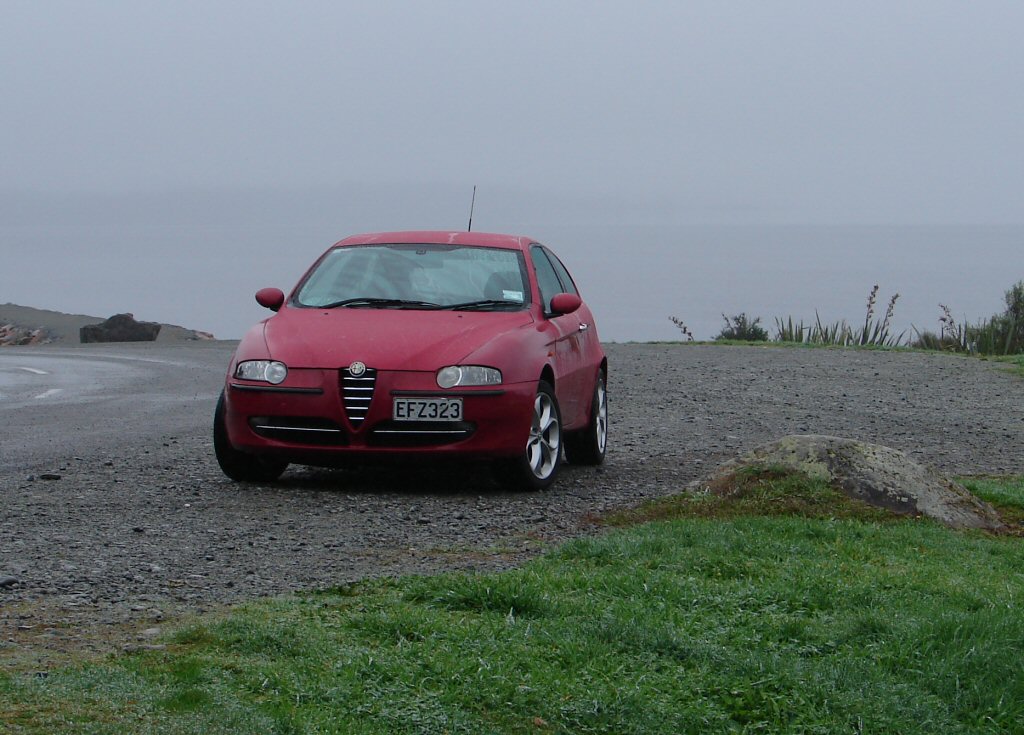
I shall elaborate further in due course, as I shall become its chief mechanic and most serious critic. I do not think it will be an unpleasant journey.!
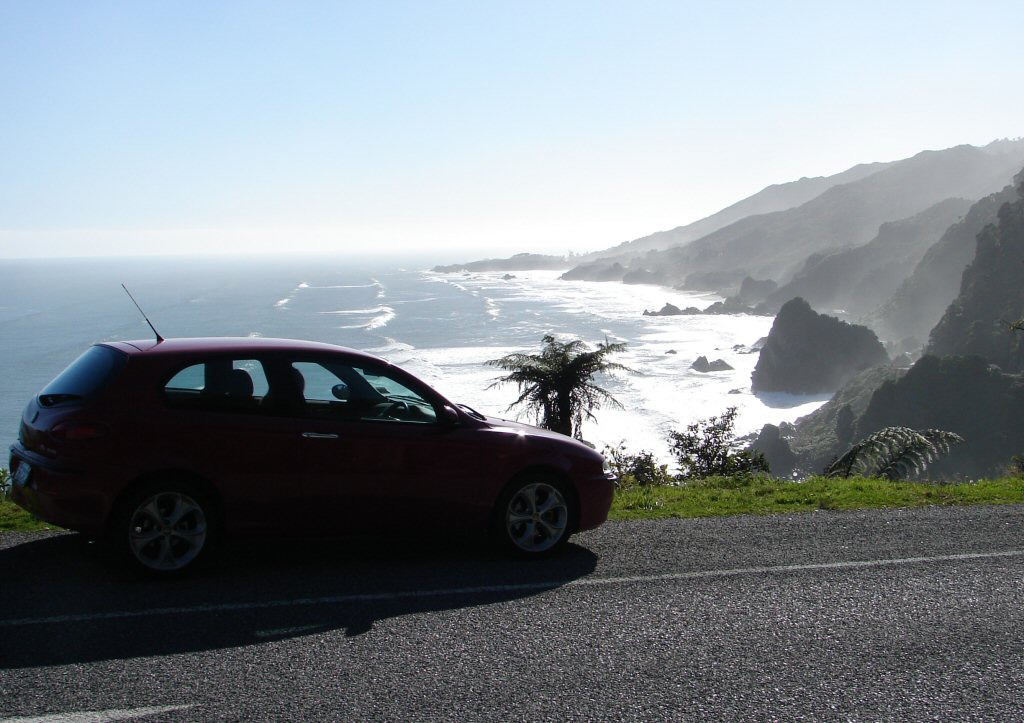
After 4 years of sterling service - mostly urban - we were committed to being Alfa owners, but several limitations had been recognised this one. Being a 2 door it was a little complex for her indoors to load grandchildren in the rear, a manoeuvre that had been rendered even more annoying due to the remote locking not working, despite two attempts to have it repaired, and there being no lock in the passengers door - it was missing when we bought the car.
Besides this, a few mechanical issues which were being managed became a little more immediate. One was that cambelt replacement time had arrived. Two was that the annoying froth in the coolant that had been present since we bought it, had become more obvious as oil in the water. It had increased in volume to the point that there was no doubt as to what it was. I had flushed the system and cleaned the header tank, but the oil was back in short time. As the car had received a cylinder head overhaul just before we bought it, I was of the opinion that it may have been a quickie repair and that perhaps the head gasket was the culprit. The only thing that had me stymied about this was that there was no water in the oil, or even condensation in the engine at all, nor loss of compression - it still performed as well as it ever had.
As luck would have it, our second Alfa presented itself. A 2009 model, also in rosso red, but with leather, and again a 5-speed manual, but a mere 78,000km under its belts. Beautiful car and drove like a new one, so that was immediately pressed into service so I would be able to bring this one up to scratch before selling it, to hopefully recover about 40% of the cost of the new one.
A nice pair Vicar..
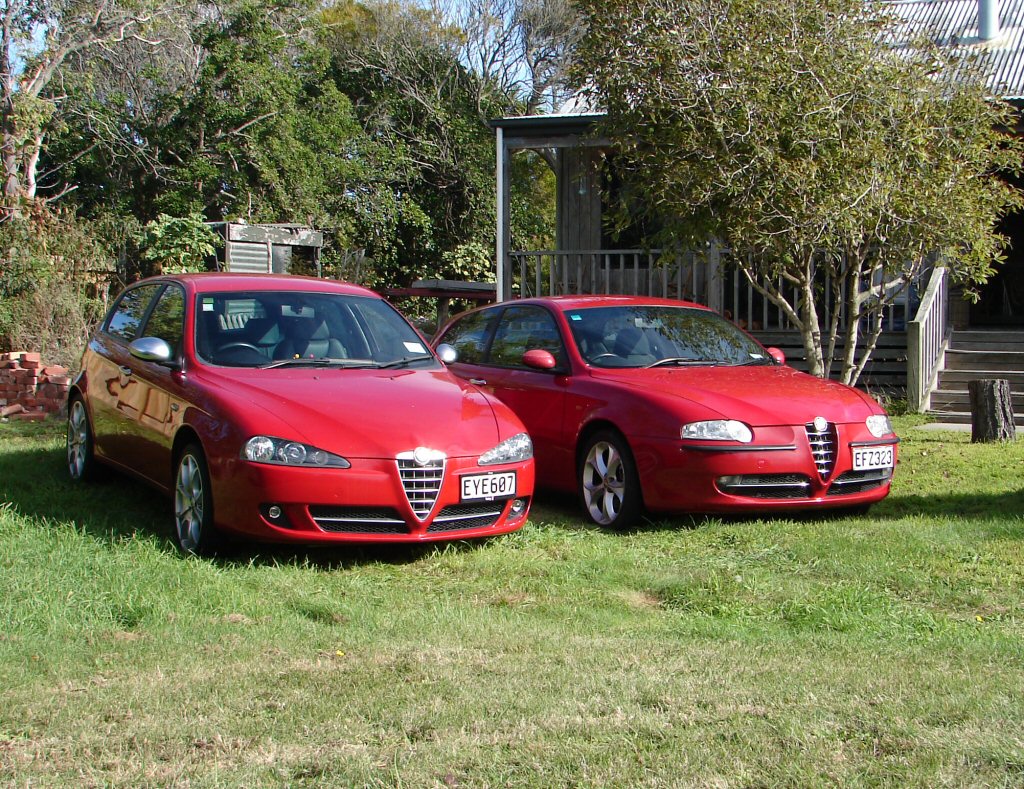
I have a permanent list of jobs waiting on the current fleet of 8 cars, so it is always a lottery as to which gets attention first. However - and nobody could have predicted it - along came a nasty virus pandemic and I was confined to quarters, or at least to remaining inside the home boundaries. Time to tick a few off the list. As this one represents income it got elevated to the top of the list. It was first on the ramp, water and oil dumped, wheels and inner guard off, and access to the belts achieved. Despite having fitted a new cam cover seal early in the piece, there had been persistent leaks from that area, so maybe there were a few too many crankcase fumes indicating tired rings. That was not something I felt like tackling, but it meant there was a lot of nasty mess in the engine bay.
Due to the oil in the cooling system, a number of coolant hoses had swelled and burst, so a good number of those had already been replaced, but there were a few smaller ones that looked like a potential liability and would now be replaced. They all came off, as did the injectors and fuel rail, the exhuast manifold, the inlet housing and throttle body and a plethora of connectors and fittings of the plastic variety. I reached the point where actually removing the head bolts and lifting the head would be next, when I found a puzzling thing. Attached to the engine oil filter housing was an alloy device with collant hoses on it. I searched the owners forums and found that this was a "heat exchanger". Kind of an oil cooler, but one that could operate in both directions I guess, by initially warming the oil, then after reaching operating temperature, cool the oil. The thing that really got my attention was that the internal failure of this thing - not uncommon - could result in oil being forced into the cooling system. This immediately made more sense to me than the head gasket scenario, because of the lack of any other symptoms. I also found that my spares guy could supply a good used one for a fraction of the cost of a new one, so this course of action was becoming my favourite. There was a chance that it could still turn out to be the head gasket, and if so, all the bits I would now have to refit in order to test it would have to come off again. I figured it was worth the risk.
So it all went back together, albeit much cleaner than it came apart. Belts, tensioners, pulley and water pump got replaced, discovering that the balancer shaft belt had last been fitted a tooth out. New oil and filter also added, although I chose to only add 2.5 litres of oil as I intended to flush it away after the first run. I removed the coolant hoses from the old heat exchanger and rotated it so that I would be able to keep an eye on it. I figured that if it was the culprit then after some running, oil would likely come out of the open pipes, and this would confirm my suspicion. I simply joined the two coolant supply pipes together so the cooling system would behave normally.
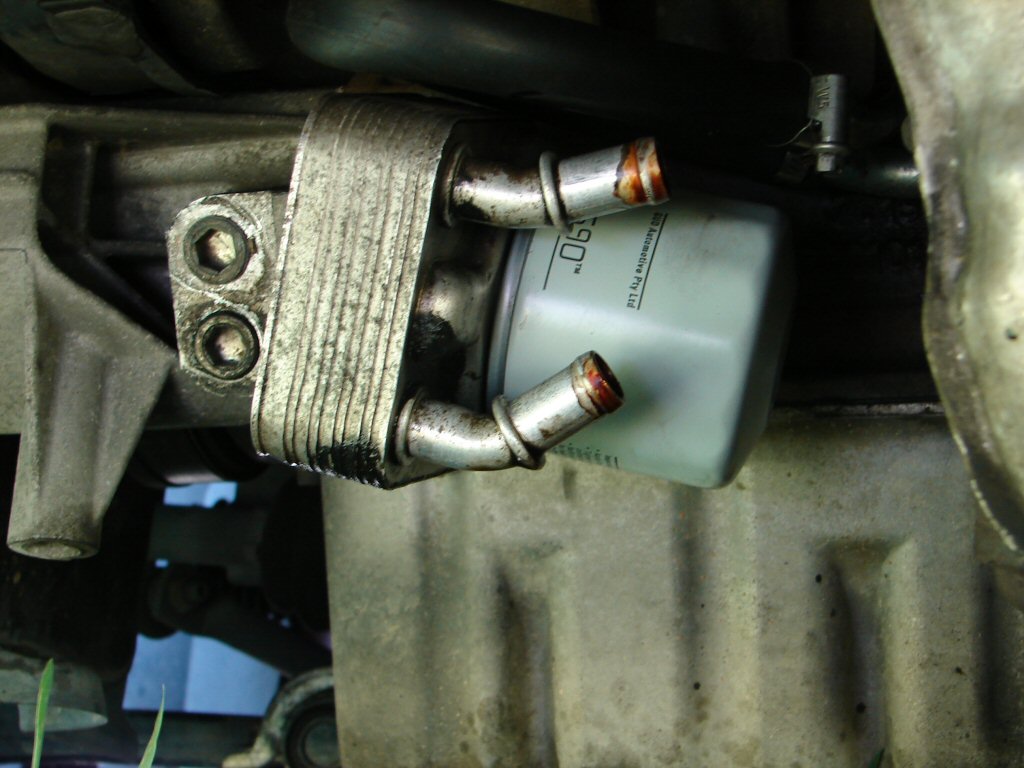
I bought another new cam cover seal, and a new set of spark plugs, as I had found that a fair amount of oil which had gotten past the last cam cover seal had gone down the spark plug recesses and was drowning the bottom ends of the coil packs.
Happily the new seal was of much more generous proportions than the last, and required a lot more compression during the fitting process, so I was pretty sure that the first one had been a dud. The specifications of spare parts can often become lost when after-market manufacturers begin pumping out spares, and this may have been one.
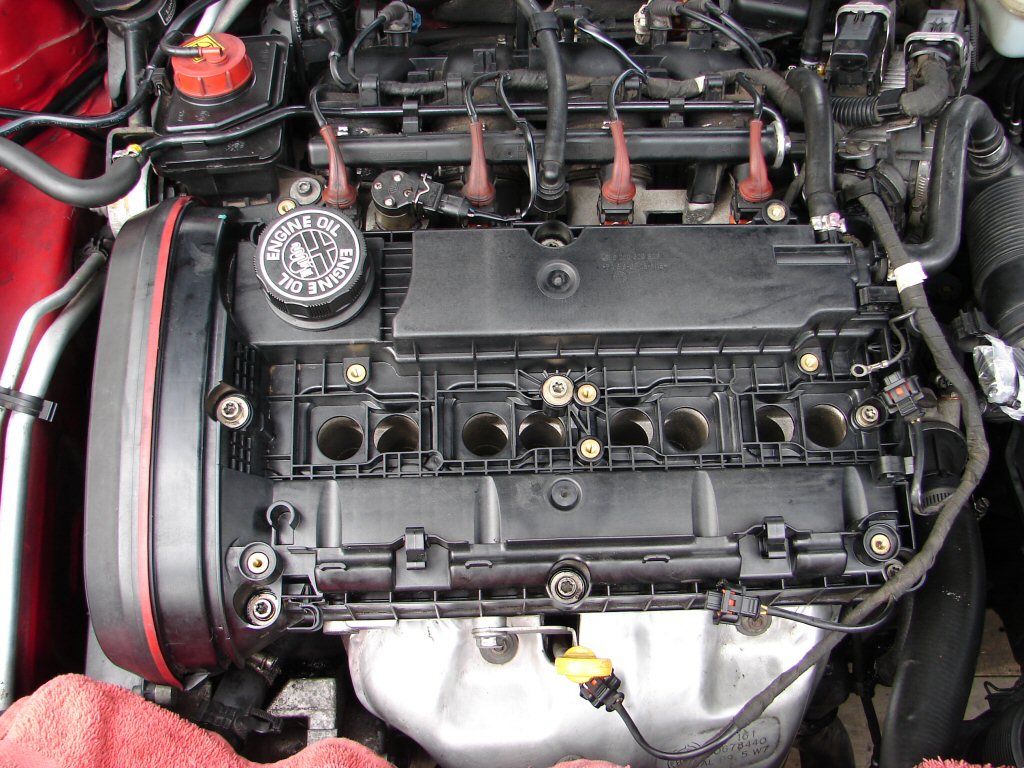
Being a "Twin SPark" the Alfa has 8 spark plugs, and as they are expected to last a very long time, they are high spec and cost a packet. I had priced them from various sources, all being after market equivalents, but again my spares guy came up trumps with genuine items at half the price.
In future I will simply go to him first.!
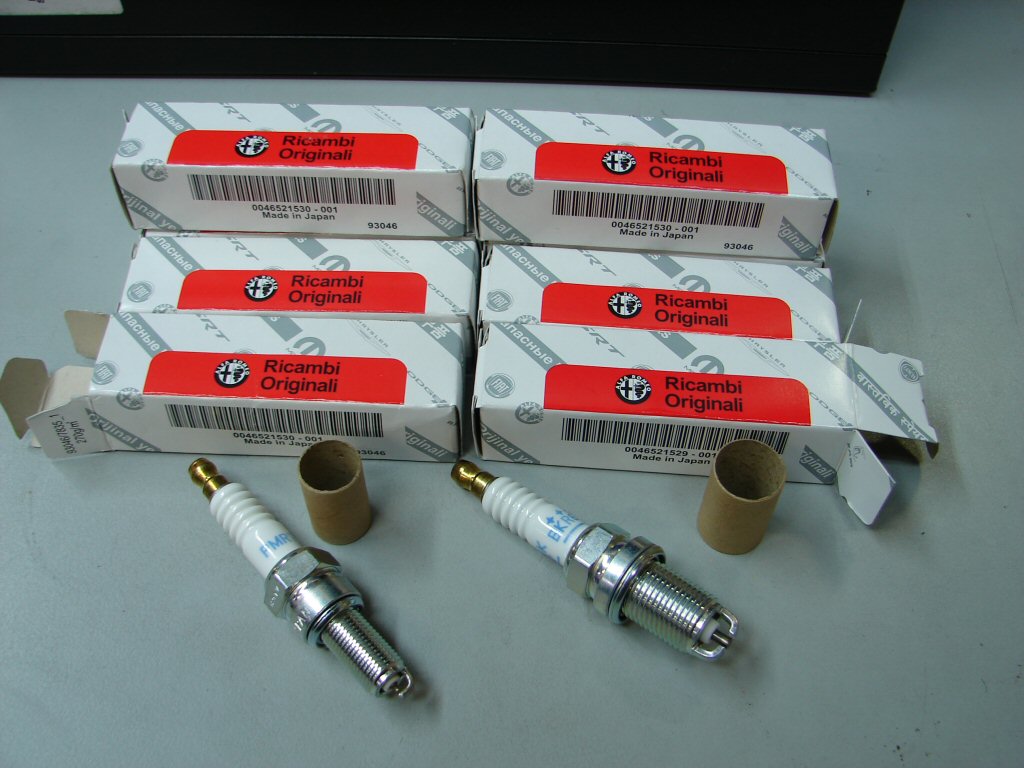
All back together the car started and ran happily. A few test drives to our local supermarket - being as far as we were allowed to go under lockdown conditions - showed the car to be as eager to perform as ever, but perhaps with a smoother engine due to the balancer shafts now being correctly timed. There were no oil leaks from the cam cover, and even better still, after about the fourth sortie some oil was found to be leaking from the open coolant pipes on the heat exchanger. This was enough encouragement for me to order a replacement unit along with my next spares. There was still some oil evident in the header tank, but I had been warned by the forums that it was going to take a long time for all the oil to find its way out of the cooling system. I decided I would remove the header tank and flush it several times so I could be sure that no fresh oil was finding its way in.
Despite lockdown the new heat exchanger showed up quickly and got fitted while I was still on the boil. It felt a bit different when tightening it up, as if I might be crushing it slightly, so I did not attempt to make it as tight as the last one had been, and hoped it would be oiltight. I know what to do if it is not.
All restored.
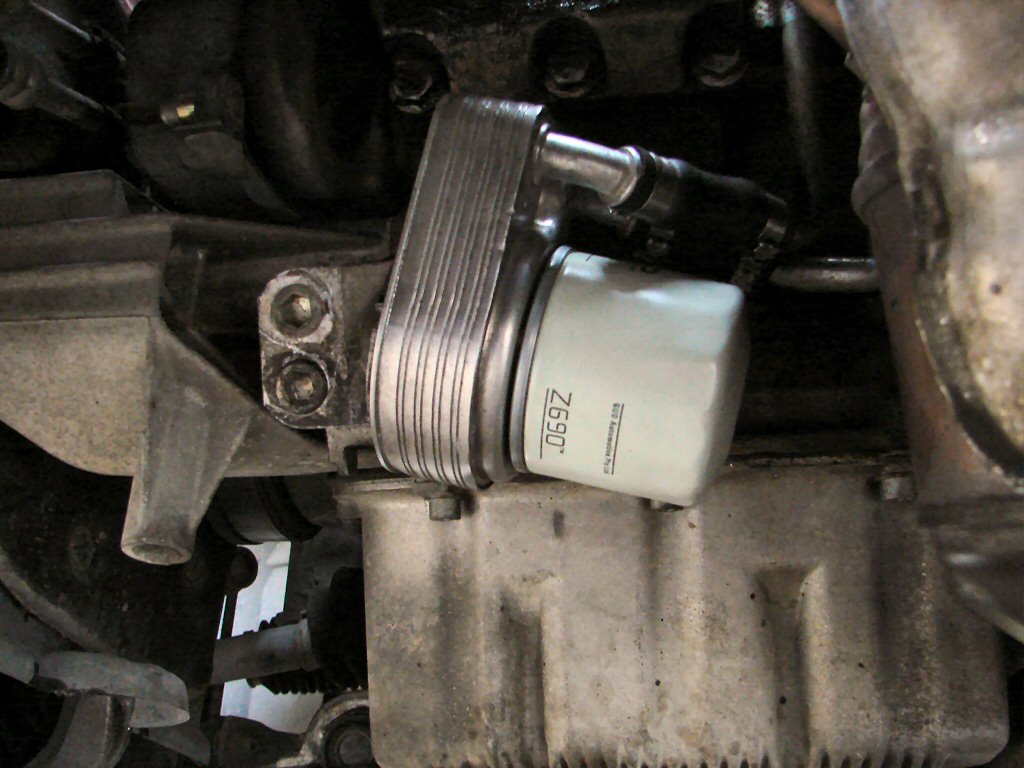
An initial drive would suggest we are both oiltight and watertight, but I shall keep an eye on it.
The next job - oh yes, another one that existed from when we bought the car, and I did mention it but it was dismissed as 'nothing' - would be to address a rattle from the left front suspension which I had identified as being worn out swaybar bushes. It turns out that the swaybar must be removed to replace them, and this involves lowering the subframe, so I have not been looking forward to it. It also explains why the people I bought it off were unwilling to class it as a problem. I am beginning to think they did not do me any favours, despite being one of the local 'specialist' servicing agents.
That is where we are at on 2 May 2020.